Traditional Braces – Pickering, ON
Give Your Child the Gift of a Straighter Smile
Traditional braces have been associated with adolescence for generations, and the reason they have lasted so long is because they work. If your child has issues like crooked, gapped, or crowded teeth, they can more than likely be treated by Dr. Maria Murad at HiFive Kids Dental & Braces. Contact us today to learn more about how getting your child metal braces today can set them up for beautiful results down the road.
Why Choose HiFive Kids Dental & Braces for Traditional Braces?
- Experienced Pediatric Orthodontist
- Comfortable, Kid-Friendly Environment
- Beautiful Results That Last a Lifetime
How Do Traditional Braces Work?
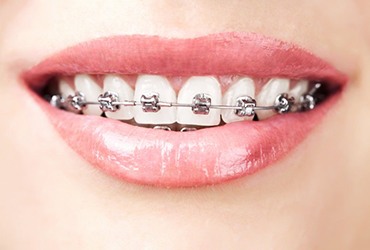
To place traditional braces, Dr. Marud will cement brackets to your child’s teeth and run a wire through them to create tension. This tension will apply steady, gentle pressure to the teeth, slowly shifting them into better positions. Over time, a crooked smile can be completely reshaped into a beautiful new state, relieving pain caused by crowding and TMJ issues while also making the teeth easier to clean. Patients typically wear braces for anywhere from one to several years, and they will have to have to be regularly adjusted by an orthodontist for the treatment to progress properly.
What Orthodontic Issues Can Braces Fix?

Traditional braces are an incredibly versatile orthodontic treatment that can be used to address many oral health issues. A few problems they can resolve include:
Bite Misalignment
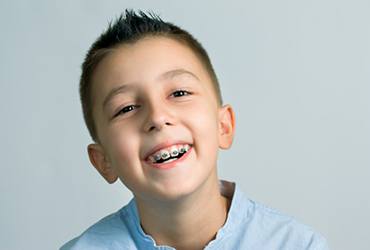
It’s not uncommon for children to develop bite problems such as underbites, overbites, and crossbites. Misalignments such as these can make it more difficult to eat and speak and also stress the jaw, leading to TMJ pain and headaches, neck pain, and backaches.
Crowded & Crooked Teeth
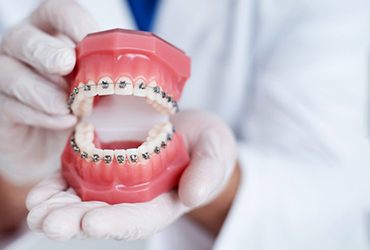
Crooked and crowded teeth can be harder to clean and easier to injure, which means that they are more likely to develop tooth decay. It’s also possible for dental crowding to cause constant discomfort in children, especially as their mouths continue to develop. By realigning your child’s teeth with braces, you’re helping to prevent potential future issues from worsening.
Gapped Teeth
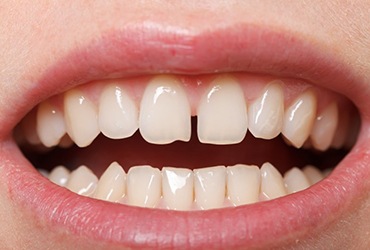
Many people are self-conscious about gaps in their teeth, which can make them more reluctant to show off their smile. These gaps can also increase the chances of your child’s teeth being injured by leaving the roots more vulnerable, and food getting caught between teeth can feed the bacteria that cause tooth decay and gum disease. Traditional braces can shift your child’s teeth into closer and more beautiful positions.
Caring for Your Braces
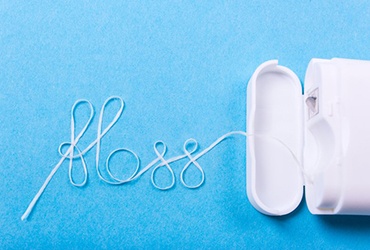
Wearing braces requires no small amount of effort on the part of the patient, and children have their work cut out for them; however, the results are well worth it. A few ways that can keep your child’s orthodontic treatment on track include:
- Ensure your kid maintains an excellent daily oral hygiene regimen that includes brushing twice, flossing once, and using antibacterial mouthwash after age six.
- Have your child clean under their braces using specialized flossing products.
- Make sure your child knows to steer clear of sticky, crunchy, and sugary foods and beverages like soda, gummy candy, and popcorn.
- Do not allow your child to use their teeth to open bottles or packages.
- Teach your kid not to chew on non-food items like ice, paperclips, or pencils.
- Have your child see a pediatric dentist every six months for a routine exam and cleaning.
Traditional Braces FAQs
Do Traditional Braces Hurt?
Toward the beginning of your child’s orthodontic treatment, they might feel some soreness from the pressure of the brackets and wires. The good news is that this sensation will go away as their teeth adjust. Plus, there are a few ways to alleviate this discomfort, like sipping on cool water, rinsing with warm saltwater, and sticking to soft foods.
Note: If your child’s lips, tongue, or the inside of their cheeks are irritated from the presence of their braces, use dental wax to cover the sharp bracket or wire.
What Can You Not Eat with Traditional Braces?
Although the brackets and wires are strong, they can come out of place with enough pressure. That’s why we encourage patients with braces to avoid crunchy, hard, and sticky foods. Some examples are whole apples, raw nuts, tortilla chips, popcorn, and pretzels. The good news is that there are far more foods on the list of things your child can eat, including plain yogurt, applesauce, scrambled eggs, pancakes, and pudding.
What Happens After You Get Your Braces Off?
After we remove your child’s braces, we move on to the next phase: the retention phase. This is a crucial part of the treatment process because upwards of 50% of patients experience orthodontic relapse in the months and years afterward. We want to avoid that, which is why we will take impressions of your child’s teeth and have a custom retainer made. We will also show them how to take care of it and provide specific instructions on how often to wear it.
Can I Chew Gum with Traditional Braces?
Chewing gum is not recommended because its sticky consistency can easily pull a bracket or wire out of position. The best way for your child to keep their breath minty-fresh is by adopting a solid oral hygiene regimen and taking great care of their braces. If they are on-the-go and need to freshen their breath, then they can opt for a sugar-free mint too!
How Long Do Traditional Braces Take?
The answer depends on a variety of factors, including the complexity of your child’s case. That’s why we need to conduct a thorough oral exam first. Once we know a bit more about their dental history and orthodontic needs, we can provide you with an estimate of their treatment timeline. We will also go over the rules and guidelines that are in place to help prevent unwanted treatment plan delays.
Can You Play Sports with Traditional Braces?
If your child participates in a sport – whether it’s skateboarding or hockey – you’ll be happy to know that traditional braces won’t get in their way. All they need to do is wear a mouthguard! That way, their teeth, their gums, and their braces are protected from any impact.
